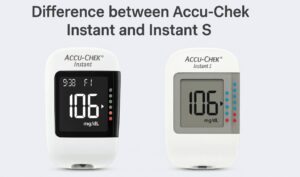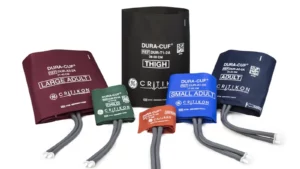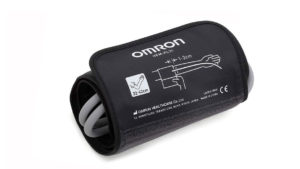
How to Choose the Right Home BP Monitor
Monitoring your blood pressure at home is crucial for maintaining good health, especially if you want to track your heart health or manage hypertension. But with so many options available, choosing the right home bp monitor can feel overwhelming. This article will guide you step-by-step on what you need to know to make an informed decision, ensuring you find a device that’s accurate, easy to use, and well-suited to your needs.
Why Measure Your Blood Pressure at Home?
Home blood pressure monitoring is a must for anyone managing conditions like hypertension or heart health. It provides a clear picture of your blood pressure trends, helping you and your doctor make informed decisions.
Measuring at home also avoids “white coat syndrome,” where anxiety during a doctor’s visit causes higher readings. Modern devices with memory functions and features like irregular heartbeat detection make it easy to track and identify potential health concerns early.
What to Consider When Choosing a Home BP Monitor
Accuracy is the top priority. Choose devices validated by organisations like the British Hypertension Society. Moreover, monitors with an adjustable cuff that fits snugly around your upper arm deliver reliable readings.
Ease of use is another key factor. Models with single-button operation and automatic memory storage make blood pressure tracking simple, especially for beginners. Trusted brands like Omron are well-known for producing accurate and durable monitors.
Getting the Right Cuff Size
The cuff size is critical for accurate readings. A cuff that’s too large or too small can lead to incorrect results. Measure your upper arm’s circumference and compare it with the size range specified by the manufacturer.
For example, Omron offers larger cuffs (22–42 cm) for people with bigger arms. A properly fitting cuff ensures your readings are reliable and consistent.
How to Use a Home Blood Pressure Monitor Correctly
To get accurate results:
- Sit comfortably with your back supported and feet flat on the floor.
- Place the cuff snugly around your upper arm at heart level.
- Rest your arm on a flat surface, stay still, and avoid talking during the measurement.
Take your readings at the same time each day, such as in the morning and evening, to maintain consistency. Always measure on bare skin for the best results.
Key Features to Look For
1. Finalise the Type: Upper Arm or Wrist
Upper arm monitors are widely recommended for their superior accuracy and reliability. They are particularly suited for people managing chronic hypertension or other heart conditions. Wrist monitors, on the other hand, are compact and portable, making them ideal for travel or occasional use. However, these monitors require careful positioning at heart level to ensure accurate readings.
2. Know Your Budget
Home bp monitors come in a wide price range. Entry-level models with essential features can be found at an affordable price, while advanced monitors with additional features like Bluetooth connectivity or app integration may cost more. Decide on your budget before shopping to narrow down your options.
3. Consider Warranty Options
A reliable warranty reflects the manufacturer’s confidence in their product. Look for monitors with at least a one-year warranty. Some premium brands offer extended warranties, providing peace of mind in case of defects or malfunctions.
4. Assess Additional Features
Advanced features like irregular heartbeat detection, averaging multiple readings, and multi-user functionality can enhance your monitoring experience. Some monitors even connect to apps via Bluetooth, allowing you to track your blood pressure trends on your smartphone. These features are especially useful for tech-savvy users.
5. Memory Storage
Many modern monitors come with built-in storage, enabling you to track your readings over time. Also, monitors with multi-user functionality allow separate profiles for different family members, making them perfect for households with multiple users.
6. Cuff Size
As mentioned earlier, the cuff size plays a significant role in accuracy. Some monitors come with universal cuff that fit a wide range of arm sizes, while others offer additional cuff options for those with particularly small or large arms.
7. User-Friendly Design
A Home bp monitor should be simple to use. Look for models with clear instructions, single-button operation, and an intuitive interface. Features like automatic inflation and large, easy-to-press buttons make the device accessible to everyone, including seniors.
8. Certifications & Regulatory Compliance
Always check for certifications or validations from reputable organisations like the British Hypertension Society or the European Society of Hypertension. These certifications ensure that the monitor meets stringent standards for accuracy and reliability.
9. Large Display
A monitor with a large, easy-to-read display is particularly beneficial for older adults or individuals with vision impairments. Clear numbers and symbols on the screen reduce confusion and make the device more user-friendly.
Avoiding Common Mistakes
Several mistakes can impact your readings:
- Using the wrong cuff size.
- Measuring right after eating, drinking caffeine, or exercising—wait at least 30 minutes.
- Taking readings over clothing instead of on bare skin.
Correcting these habits ensures more accurate and trustworthy results.
How Often Should You Check Your Blood Pressure?
For most people, once a day is sufficient. However, those managing hypertension may need to measure their readings more frequently, as recommended by their doctor.
Taking readings at consistent times daily and recording them helps track trends effectively. Devices with memory functions make this process easier.
FAQs
Q: Can I use a Home bp monitor if I have larger arms?
Yes, many monitors offer larger cuffs or universal cuffs to accommodate bigger arms. Hence, make sure to choose a cuff size that fits well for accurate readings.
Q: Are there budget-friendly blood pressure monitors available?
Absolutely. Many affordable options provide reliable results, particularly models with fewer advanced features. Look for trusted brands to ensure quality.
Q: Do I need to calibrate my monitor?
Yes, regular calibration ensures your monitor stays accurate over time. Most manufacturers recommend checking calibration every one to two years.
Q: How does memory storage work on a home bp monitor?
It allows the monitor to save past readings automatically. Some models store readings for multiple users, making it ideal for family use.
Q: Is a wrist monitor less accurate than an upper arm monitor?
Generally, yes. They require precise positioning at heart level to provide accurate results. Hence, upper arm monitors are more consistent and recommended for regular use.
Q: What’s the lifespan of a home bp monitor?
With proper care and regular calibration, most monitors last several years. Ensure you follow the manufacturer’s maintenance instructions.
Q: Can I get a free calibration for my device?
Some pharmacies or manufacturers offer free or low-cost calibration services. Hence, check with your monitor’s brand for details.
Key Takeaways
- Finalise whether you need an upper arm or wrist monitor based on your lifestyle and accuracy needs.
- Choose a monitor with a cuff that fits snugly around your arm for reliable readings.
- Look for user-friendly designs, memory storage, and a large display for ease of use.
- Certifications from trusted organisations like the British Hypertension Society ensure accuracy and reliability.
- Decide your budget and consider warranty options for long-term peace of mind.
- Consult your doctor for personalised advice and monitor calibration recommendations.
By following these tips, you can confidently choose the right home bp monitor and take control of your health.













